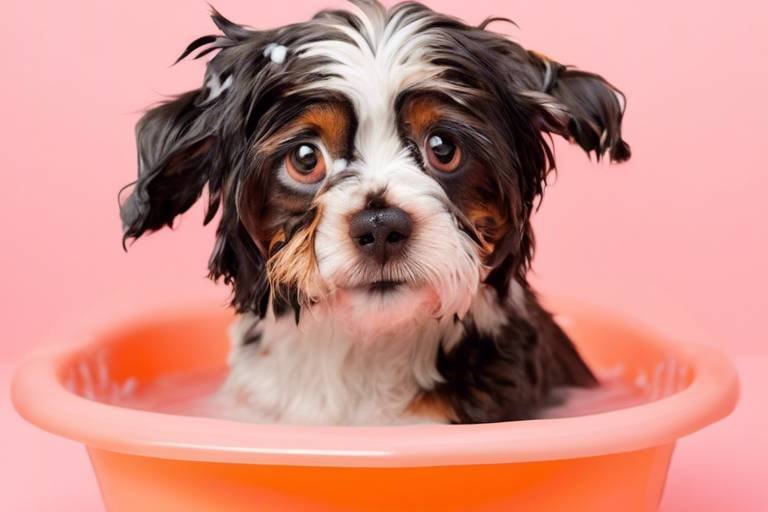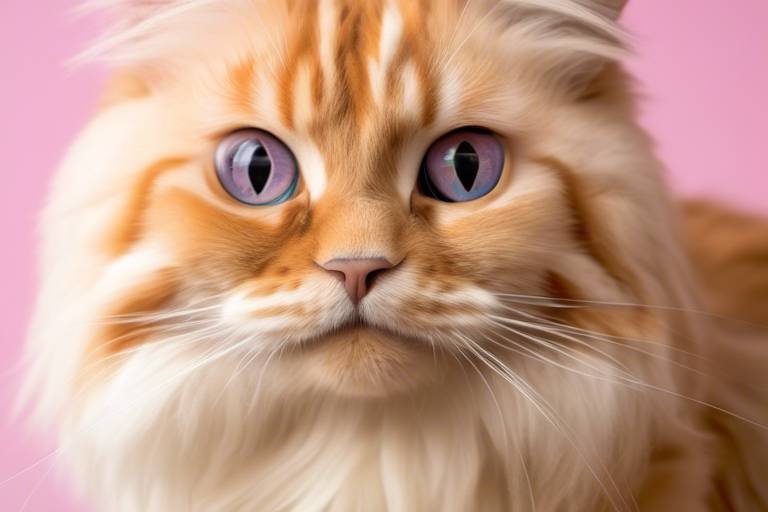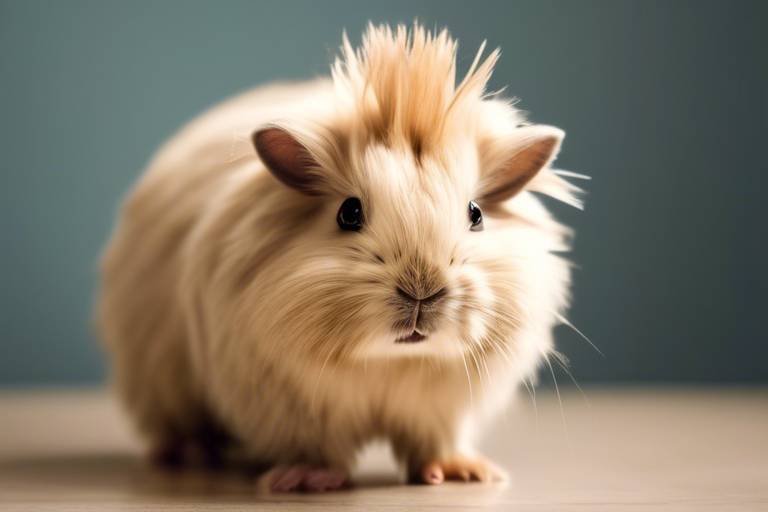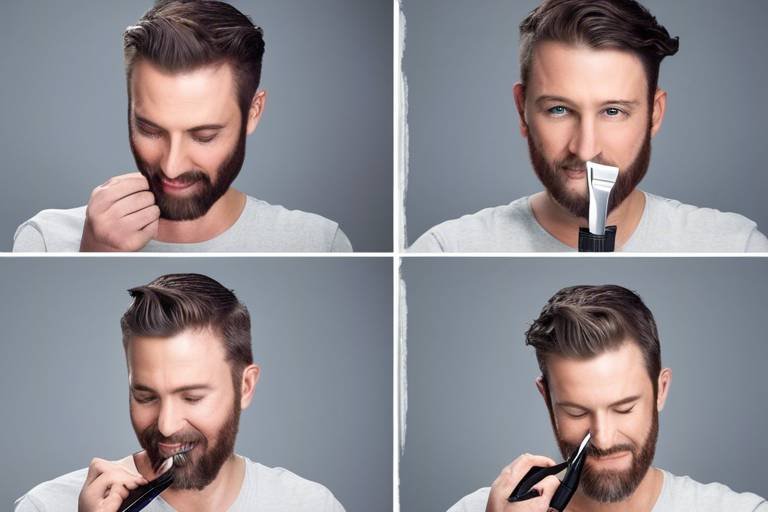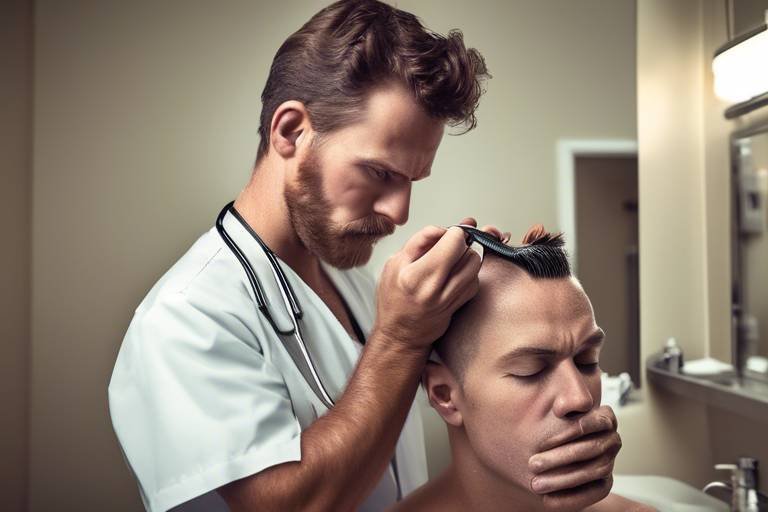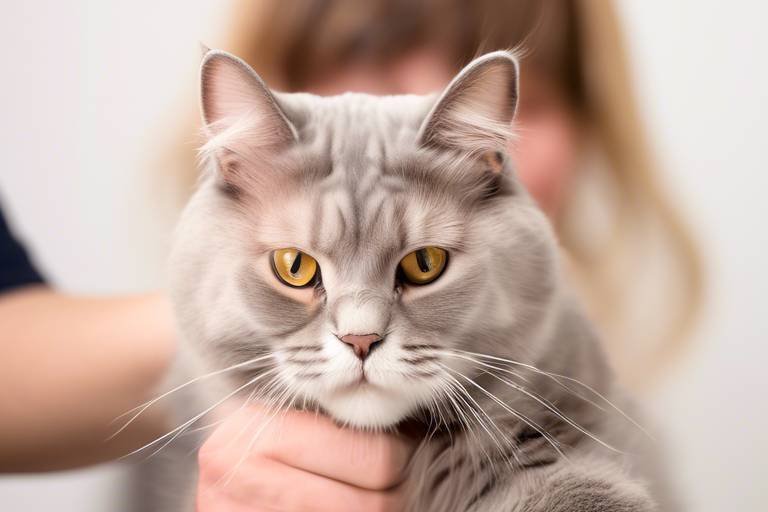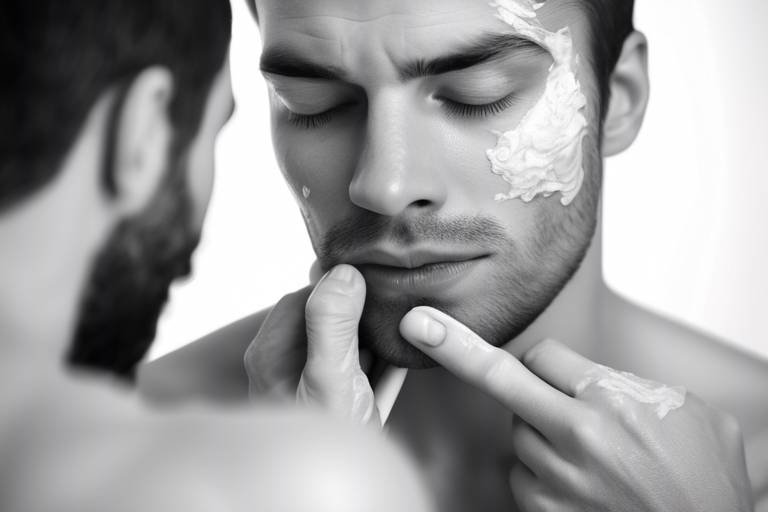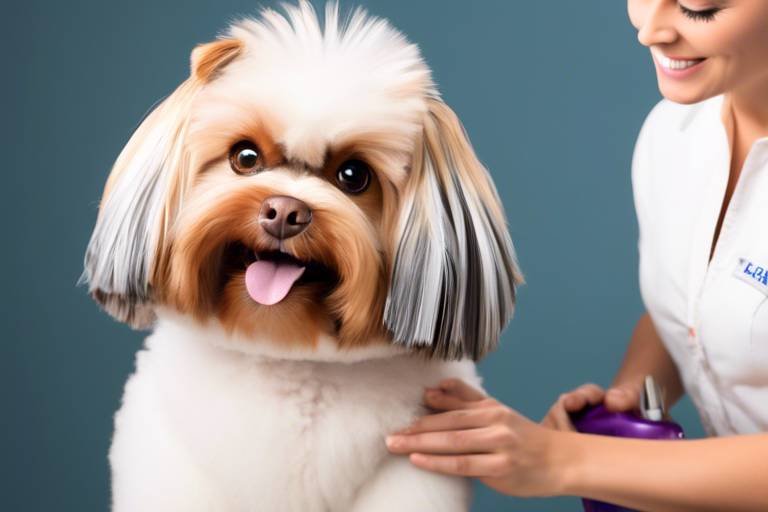The Best Grooming Techniques for Flat-Faced Breeds
Flat-faced dog breeds, often referred to as "brachycephalic" breeds, have unique physical characteristics that require specialized grooming techniques. These adorable pups, including Bulldogs, Pugs, and French Bulldogs, not only steal our hearts with their charming looks but also demand a little extra care to ensure their health and comfort. In this article, we will explore essential grooming practices tailored specifically for these breeds, helping you maintain their unique features while promoting their overall well-being. So, if you're a proud owner of a flat-faced breed, grab your grooming tools and let's dive into the best techniques to keep your furry friend looking and feeling great!
Flat-faced breeds have distinct physical traits that set them apart from other dogs. Their short snouts and round faces contribute to their adorable appearance, but these features can also lead to specific health concerns. For instance, their skin folds may trap moisture and debris, making them prone to infections. Additionally, their unique facial structure can impact their breathing, making it crucial to understand their grooming needs. By recognizing these characteristics, you can tailor your grooming routine to keep your pet comfortable and healthy. Remember, a well-groomed dog is a happy dog!
Bathing your flat-faced breed requires a gentle approach to avoid irritating their sensitive skin. Start by using a mild, hypoallergenic dog shampoo to ensure their skin remains moisturized. It's essential to pay close attention to the skin folds, as these areas can accumulate dirt and moisture. When bathing, follow these steps:
- Wet your dog thoroughly, avoiding their eyes and ears.
- Apply shampoo, focusing on the folds and creases.
- Rinse thoroughly to prevent any residue that could irritate their skin.
- Dry your dog completely, especially in the folds, to prevent moisture buildup.
By following these techniques, you can keep your flat-faced breed clean and comfortable, reducing the risk of skin irritations.
Regular brushing is vital for maintaining the coat of flat-faced breeds. Their short coats may seem low-maintenance, but they can still become matted or dirty if not cared for properly. Use a soft-bristle brush or a grooming mitt to gently remove loose hair and dirt. Aim to brush your dog at least once a week. This not only helps keep their coat shiny but also allows you to check for any skin issues or parasites. Remember, grooming your dog can be a bonding experience, so make it fun by offering treats and praise!
Flat-faced breeds are prone to ear and eye issues due to their unique anatomy. Regular cleaning is essential to prevent infections. For ear care, use a vet-recommended ear cleaner and a cotton ball to gently wipe the outer ear. Avoid inserting anything deep into the ear canal. For eye care, keep an eye out for tear stains, which are common in these breeds. You can use a damp cloth to wipe away any discharge gently. If you notice excessive tearing or redness, it’s crucial to consult your veterinarian.
Nail trimming is another essential grooming task for flat-faced breeds. Long nails can cause discomfort and affect their mobility. Aim to trim your dog's nails every 3-4 weeks. If you're unsure how to trim nails safely, consider these tips:
- Use a sharp, high-quality nail clipper designed for dogs.
- Trim just the tip of the nail, avoiding the quick (the pink part inside the nail).
- Reward your dog with treats and praise to make the experience positive.
Regular nail care will keep your furry friend comfortable and happy!
Many flat-faced breeds are prone to breathing difficulties, especially in hot or humid weather. Grooming practices can help mitigate these issues. Ensure your dog is well-hydrated and avoid strenuous activities during peak heat. Additionally, keep their face clean and free from debris to promote better airflow. If you notice any signs of distress, such as excessive panting or difficulty breathing, consult your veterinarian immediately.
Oral hygiene is crucial for flat-faced breeds, who are often susceptible to dental problems. Regular brushing is vital to prevent plaque buildup. Use a dog-specific toothbrush and toothpaste, and aim to brush your dog's teeth at least two to three times a week. If your dog resists brushing, consider dental chews or water additives as alternatives. Keeping their teeth healthy will contribute to their overall well-being!
As the seasons change, so do your flat-faced breed's grooming needs. In warmer months, be extra vigilant about keeping them cool and well-groomed to prevent overheating. Conversely, during colder months, you may need to adjust your grooming routine to protect their skin from dryness. Always monitor their comfort level and adjust grooming practices accordingly to ensure they remain happy and healthy year-round.
Being aware of grooming-related health issues is essential for flat-faced breeds. Look out for signs such as:
- Redness or swelling in skin folds
- Excessive scratching or biting at their skin
- Foul odor from ears or skin
- Difficulty breathing or excessive panting
If you notice any of these symptoms, it’s important to consult your veterinarian for advice and potential treatment. Your dog's health and comfort should always be your top priority!
Q: How often should I bathe my flat-faced breed?
A: It’s generally recommended to bathe them every 4-6 weeks, but this can vary based on their activity level and skin condition.
Q: Are there specific grooming tools I should use?
A: Yes, using a soft-bristle brush, gentle ear cleaner, and dog-specific toothbrush will help maintain their grooming routine effectively.
Q: What should I do if my dog has breathing difficulties?
A: If you notice any breathing issues, consult your veterinarian immediately for guidance and support.

Understanding Flat-Faced Breeds
Flat-faced breeds, often referred to as brachycephalic dogs, are a fascinating group of canines that include popular breeds like Bulldogs, Pugs, and French Bulldogs. These adorable companions are easily recognizable due to their unique facial structure, characterized by a short snout and a broad skull. However, this charming appearance comes with its own set of grooming and health challenges that every owner should be aware of.
Understanding the anatomy of flat-faced breeds is crucial for effective grooming and care. Their distinctive features, while endearing, can lead to specific health issues, particularly concerning their skin folds, breathing, and dental health. For instance, the skin folds around their faces can trap moisture and debris, leading to irritations or infections if not cleaned regularly. Similarly, their short noses can cause breathing difficulties, making it essential to monitor their comfort levels during grooming sessions.
To give you a clearer picture, here’s a quick comparison of some popular flat-faced breeds:
| Breed | Common Health Issues | Grooming Needs |
|---|---|---|
| Bulldog | Skin infections, breathing difficulties | Regular bathing and skin fold cleaning |
| Pug | Eye problems, obesity | Frequent brushing and dental care |
| French Bulldog | Hip dysplasia, allergies | Occasional bathing and ear cleaning |
As you can see, each breed has its own unique set of grooming needs and health concerns. This knowledge is not just for the sake of aesthetics; it plays a significant role in ensuring your furry friend lives a happy and healthy life. By being attentive to their specific requirements, you can help minimize discomfort and prevent potential health issues.
Moreover, it’s important to recognize that flat-faced breeds often have a more challenging time regulating their body temperature due to their anatomy. Therefore, grooming sessions should be conducted in a cool, comfortable environment to avoid overheating. Always keep an eye on your pet during grooming, watching for signs of distress or discomfort. After all, your goal is to make grooming a positive experience for them.
In summary, understanding flat-faced breeds goes beyond just admiring their cute looks. It involves recognizing their unique grooming needs and health concerns to provide the best care possible. By doing so, you not only enhance their well-being but also strengthen the bond you share with your beloved pet.

Bathing Techniques
Bathing flat-faced breeds requires a unique approach, as their facial structure and skin folds can easily trap moisture and dirt, leading to irritation or infections. First and foremost, it's essential to choose a gentle, hypoallergenic dog shampoo that won't irritate their sensitive skin. Always remember that less is more; you don’t want to over-bathe your furry friend. Generally, bathing them every 4 to 6 weeks is sufficient, unless they get particularly dirty or smelly.
Before you even think about turning on the water, prepare your bathing area. Make sure you have everything you need within reach—this includes your shampoo, towels, a brush, and possibly a non-slip mat to keep your pup safe. When it’s time for the bath, use lukewarm water to avoid shocking their system. A handheld showerhead or a cup can work wonders for rinsing, allowing you to control the water flow and avoid getting water in their ears.
While washing your flat-faced breed, pay special attention to their facial folds. These areas can collect moisture, which may lead to skin issues if not dried properly. Gently lift the folds and clean them with a damp cloth, ensuring you remove any debris or dirt. After applying shampoo, massage it gently into their coat, taking care not to scrub too hard, as this can irritate their skin.
Once you’ve thoroughly lathered them up, it’s time to rinse. Make sure to rinse all shampoo out of their coat and skin folds, as leftover product can cause irritation. After the rinse, wrap your furry friend in a towel to soak up excess water before letting them air dry or using a pet-safe blow dryer on a low setting. Always monitor the temperature and distance to avoid overheating or burning their skin.
Finally, don’t forget to reward your pup after bath time! A treat or extra cuddles can turn bathing from a chore into a fun bonding experience. By following these bathing techniques, you can help ensure your flat-faced breed stays clean, comfortable, and healthy.
- How often should I bathe my flat-faced dog? It's generally recommended to bathe them every 4 to 6 weeks, but adjust based on their activity level and coat condition.
- What type of shampoo is best for flat-faced breeds? Look for a gentle, hypoallergenic shampoo specifically formulated for dogs to avoid skin irritation.
- Can I use human shampoo on my dog? No, human shampoos can be too harsh and may irritate your dog's skin. Always use products designed for pets.
- What should I do if my dog doesn’t like baths? Gradually introduce them to the bathing process, use treats, and make it a positive experience to help ease their anxiety.
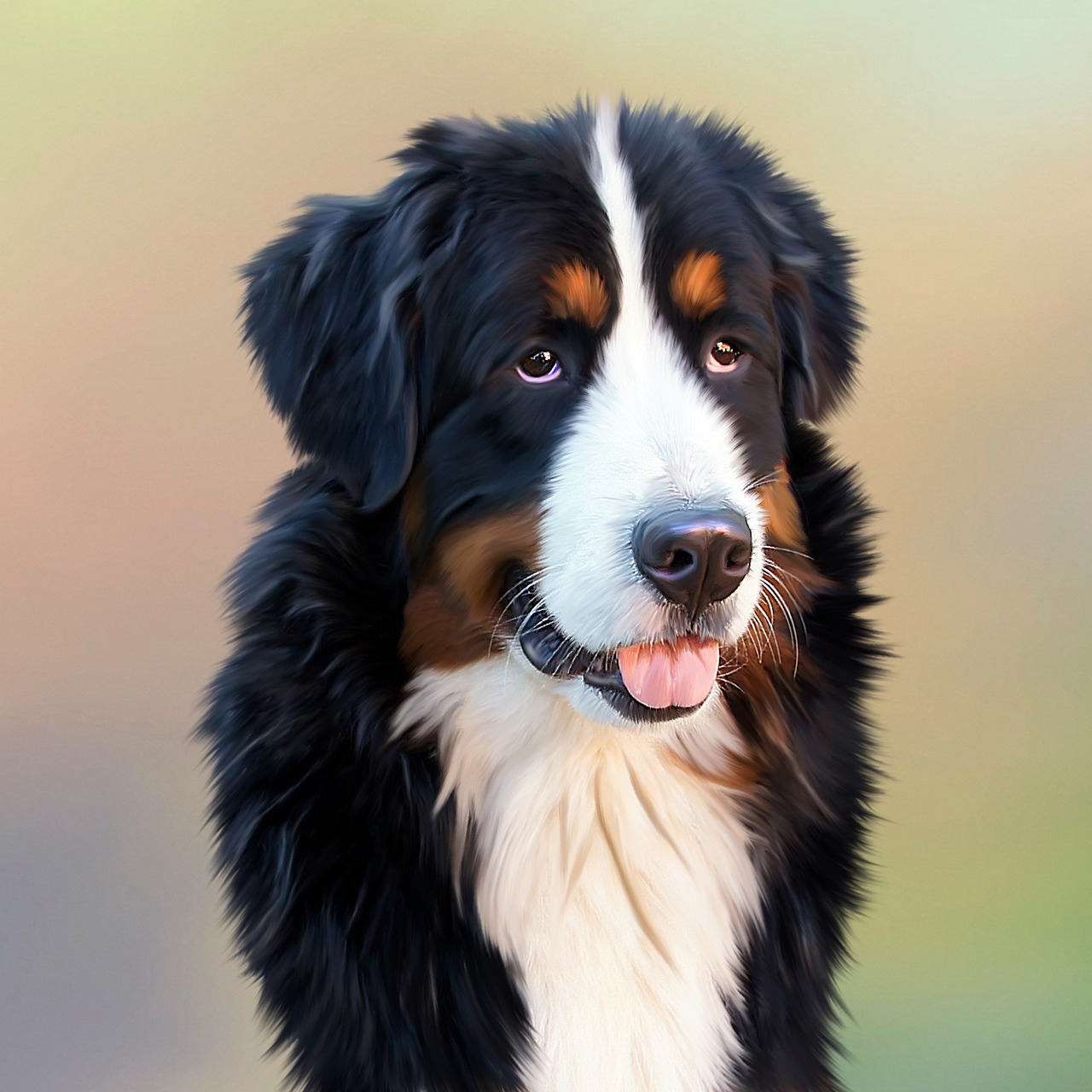
Brushing and Coat Care
When it comes to grooming flat-faced breeds, brushing and coat care are essential components that shouldn't be overlooked. These adorable pups, like Bulldogs and Pugs, often have short coats, but that doesn't mean they don't require regular maintenance. In fact, their unique skin folds and facial structure make it even more important to keep their coats healthy and free from tangles. Think of brushing as a bonding experience; it's not just about keeping them looking good, but also ensuring their skin stays healthy and irritation-free.
One of the first things to consider is the right type of brush. For short-haired breeds, a rubber grooming mitt or a bristle brush can work wonders. These tools help to remove loose hair while gently massaging the skin, promoting circulation. If your flat-faced friend has a slightly longer coat, a slicker brush might be the way to go. This brush can help you tackle any knots or mats that may form, especially around those adorable facial folds.
Brushing should ideally be a part of your routine at least once a week. However, during shedding seasons, which can vary depending on the breed and climate, you may want to increase this frequency. Regular brushing not only helps to remove loose hair but also minimizes the risk of skin irritations caused by trapped dirt and debris. Remember, a clean coat is a happy coat!
It's also crucial to pay special attention to the areas around the face and folds. These spots can accumulate moisture and debris, leading to skin issues if not cleaned regularly. When brushing, take your time and gently work through these areas to keep them clean and dry. If you notice any redness or irritation, it's time to consult with your vet.
In addition to brushing, you might want to incorporate a coat conditioner into your grooming routine. This can help keep their fur soft and shiny, making brushing easier and more effective. Just be sure to choose products specifically designed for dogs, as human products can sometimes irritate their skin.
Lastly, always make grooming a positive experience. Use treats and praise to encourage your flat-faced buddy during brushing sessions. This not only helps them associate grooming with something enjoyable but also strengthens your bond with them. After all, a well-groomed dog is a happy dog!
How often should I brush my flat-faced dog?
It's recommended to brush your flat-faced dog at least once a week. However, during shedding seasons, increasing the frequency can help manage loose hair and keep their coat healthy.
What type of brush is best for my flat-faced breed?
A rubber grooming mitt or bristle brush works well for short-haired breeds, while a slicker brush is ideal for slightly longer coats. Choose based on your dog's specific coat type.
Can I use human hair products on my dog?
No, it's best to use products specifically designed for dogs. Human products can irritate their skin and may not provide the necessary benefits for their coat.
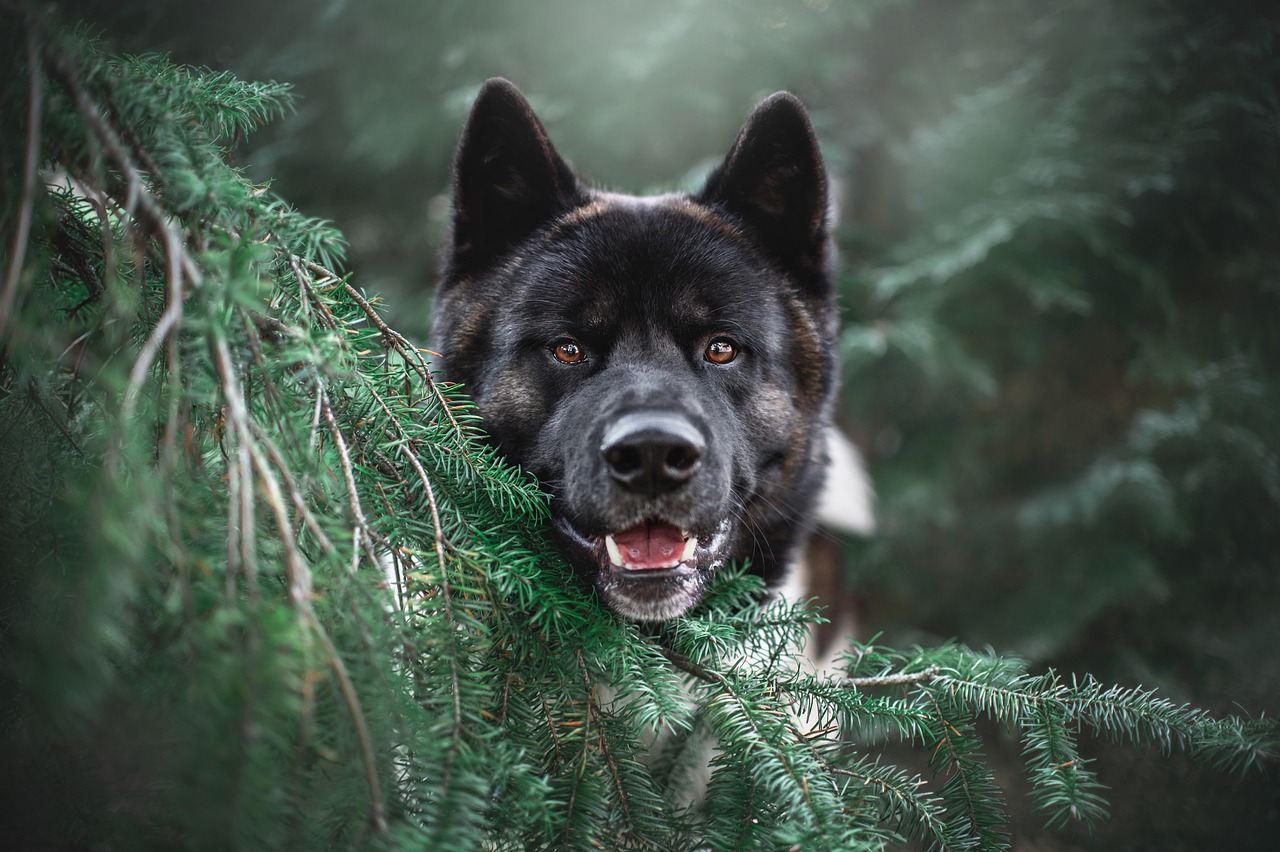
Ear and Eye Care
When it comes to grooming flat-faced breeds, ear and eye care is often overlooked, yet it's absolutely vital for their overall health and comfort. These adorable pups, like Pugs and Bulldogs, have unique anatomical features that make them more susceptible to certain issues. Their adorable squished faces might be a hit on social media, but they can also lead to some serious health concerns if not properly managed. So, let’s dive into the best practices for keeping those ears and eyes in tip-top shape!
First off, let's talk about the ears. Flat-faced breeds tend to have floppy ears, which can trap moisture and debris, creating a perfect breeding ground for bacteria and yeast. Regular ear cleaning is essential to prevent infections. You should aim to check their ears at least once a week. Use a vet-recommended ear cleaner and a cotton ball to gently wipe the outer ear canal. Remember, never insert anything deep into the ear canal; you could cause injury or push debris further in. If you notice any redness, swelling, or a bad odor, it’s time to consult your veterinarian.
Now, moving on to those beautiful eyes! Flat-faced breeds often have prominent eyes, which can lead to tear staining and irritation. To keep their peepers sparkling, you should regularly wipe away any discharge with a soft, damp cloth. This simple action not only keeps their eyes clean but also helps to prevent tear staining that can become unsightly over time. If you notice excessive tearing or any signs of discomfort, such as squinting or redness, don’t hesitate to reach out to your vet. They can offer specialized treatments or suggest products to alleviate any discomfort.
Here’s a quick checklist for ear and eye care:
- Check ears weekly for dirt and wax buildup.
- Use a vet-approved ear cleaner.
- Wipe eyes daily to remove discharge.
- Consult your vet if you notice any unusual signs.
In addition to regular cleaning, consider incorporating a few grooming tools into your routine. A soft-bristled brush can help remove debris from around the eyes, while a pair of rounded-tip scissors can be handy for trimming any hair that may obstruct their vision. Just like a good haircut can make a person feel great, a little grooming can keep your furry friend looking sharp and feeling comfortable!
In summary, keeping an eye on your flat-faced breed's ears and eyes is not just about aesthetics; it’s about their health and happiness. By establishing a regular cleaning routine and being vigilant about any changes, you can help ensure that your beloved companion enjoys a long, healthy life. Remember, a happy pup is a well-groomed pup!
Q: How often should I clean my flat-faced dog's ears?
A: It's best to check and clean your dog's ears at least once a week to prevent infections.
Q: What should I use to clean my dog's ears?
A: Use a vet-recommended ear cleaner and cotton balls for gentle cleaning of the outer ear.
Q: How can I prevent tear staining?
A: Regularly wipe your dog's eyes with a damp cloth and consult your vet for products that can help.
Q: When should I consult a vet regarding my dog's ears or eyes?
A: If you notice any signs of redness, swelling, excessive tearing, or discharge, it’s important to consult your veterinarian.

Nail Trimming Tips
Nail trimming is an essential part of grooming for flat-faced breeds, and it’s not just about aesthetics; it directly impacts their comfort and mobility. Imagine walking around with long nails—unpleasant, right? For our furry friends, long nails can lead to pain, difficulty walking, and even joint issues over time. So, how do we ensure that our beloved Bulldogs, Pugs, and other flat-faced breeds have healthy, well-trimmed nails? Here are some tips that will make the process smoother for both you and your pup.
First things first, choose the right tools. Invest in a quality pair of dog nail clippers or a nail grinder. There are various types available, including guillotine-style clippers and electric grinders. Each has its pros and cons, but the key is to pick one that you feel comfortable using. If you’re unsure, consult your vet or a professional groomer for recommendations. Having the right tools can make a world of difference, much like using a sharp knife in the kitchen versus a dull one!
Next, it’s crucial to familiarize your dog with the process. Start by letting them sniff the clippers or grinder, associating it with positive experiences like treats and praise. You want your dog to feel relaxed and safe when it’s time for nail trimming. Gradually get them used to having their paws handled. This can involve gently massaging their paws and nails, which will help ease any anxiety they may have about the process.
When it’s time to trim, make sure you have good lighting and a calm environment. If your dog is squirmy, consider having someone help you hold them still. Trim only the tip of the nail, avoiding the quick—the pink part inside the nail that contains blood vessels and nerves. Cutting into the quick can cause pain and bleeding, so it’s essential to be cautious. If you’re unsure where the quick is, it’s better to err on the side of caution and trim less rather than more. You can always trim a little more later if needed.
For those who may be nervous about trimming nails, here’s a handy step-by-step guide:
| Step | Description |
|---|---|
| 1 | Gather your tools: clippers or grinder, styptic powder, and treats. |
| 2 | Familiarize your dog with the clippers and reward them with treats. |
| 3 | Hold your dog’s paw gently and identify the quick. |
| 4 | Trim the nail carefully, avoiding the quick. |
| 5 | Reward your dog after each nail is trimmed to create a positive association. |
Remember, patience is key. If your dog becomes anxious or stressed, it’s okay to take a break and try again later. You want this to be a positive experience for both you and your furry friend. Additionally, consider trimming your dog’s nails every 3-4 weeks, as this can help keep them at a comfortable length.
Lastly, if you’re ever in doubt or if your dog’s nails seem particularly thick or difficult to trim, don’t hesitate to consult a professional groomer or your veterinarian. They can provide you with additional tips and even show you the ropes if you're new to this process. After all, maintaining your dog’s nail health is a crucial part of their overall well-being!
Q1: How often should I trim my flat-faced dog’s nails?
A: Ideally, you should trim your dog’s nails every 3-4 weeks, but this can vary depending on their activity level and how quickly their nails grow.
Q2: What if I accidentally cut the quick?
A: If you accidentally cut the quick, apply styptic powder to stop the bleeding. If the bleeding doesn’t stop or if your dog seems in pain, contact your veterinarian.
Q3: Can I use human nail clippers on my dog?
A: While it’s possible, it’s not recommended. Dog nail clippers are designed specifically for their nail structure and can provide a cleaner cut.
Q4: What if my dog hates having their nails trimmed?
A: Start slowly by getting them used to having their paws handled. Use treats and praise to create a positive association, and consider consulting a professional groomer for assistance.

Managing Breathing Issues
Flat-faced breeds, often referred to as brachycephalic breeds, are adorable companions with their squished faces and charming personalities. However, their unique anatomy can lead to significant breathing challenges. As a loving pet owner, it's crucial to be aware of these issues and take proactive steps to manage them. Have you ever noticed your Bulldog or Pug struggling to catch their breath after a simple play session? This can be a common scenario, and understanding how to help your furry friend is essential.
One of the primary concerns with these breeds is their narrow airways. The flat structure of their faces often leads to a condition known as Brachycephalic Obstructive Airway Syndrome (BOAS). This means that their air passages are constricted, making it difficult for them to breathe, especially during exercise or in hot weather. To help mitigate these breathing issues, consider the following grooming practices:
- Regular Grooming: Keeping their coat clean and free of tangles can help improve airflow around their face and neck.
- Cool Environment: Always ensure that your flat-faced breed is in a cool environment, especially during hot days. Heat can exacerbate their breathing difficulties.
- Weight Management: Obesity can worsen breathing problems, so maintaining a healthy weight through proper diet and exercise is vital.
Additionally, during grooming sessions, pay special attention to their facial folds. These areas can trap moisture and dirt, leading to infections that may further complicate their breathing. Use a soft, damp cloth to gently clean these folds, ensuring that you dry them thoroughly afterward. If you notice any unusual odors or discharge from these areas, it may be time to consult your veterinarian.
Another excellent tip is to avoid strenuous activities during peak heat hours. Instead, opt for early morning or late evening walks when temperatures are cooler. This simple adjustment can make a world of difference in your pet’s comfort and health. Remember, a happy dog is a healthy dog!
Finally, always be on the lookout for signs that indicate your flat-faced breed is having trouble breathing. Symptoms such as excessive panting, coughing, or lethargy should not be ignored. If you notice these signs, it's essential to seek veterinary assistance promptly. Your furry friend depends on you to keep them safe and healthy, so stay vigilant and proactive in managing their care.
Q: What are the common breathing issues in flat-faced breeds?
A: Common issues include snoring, noisy breathing, and difficulty breathing during exercise, all of which can be attributed to their narrow airways.
Q: How can I tell if my dog is having a breathing emergency?
A: Signs include severe panting, blue-tinged gums, excessive drooling, or collapse. If you notice these symptoms, seek veterinary help immediately.
Q: Are there any specific grooming tools that can help with breathing issues?
A: While there are no specific tools that directly help with breathing, keeping their coat and facial folds clean can prevent infections that may complicate breathing.
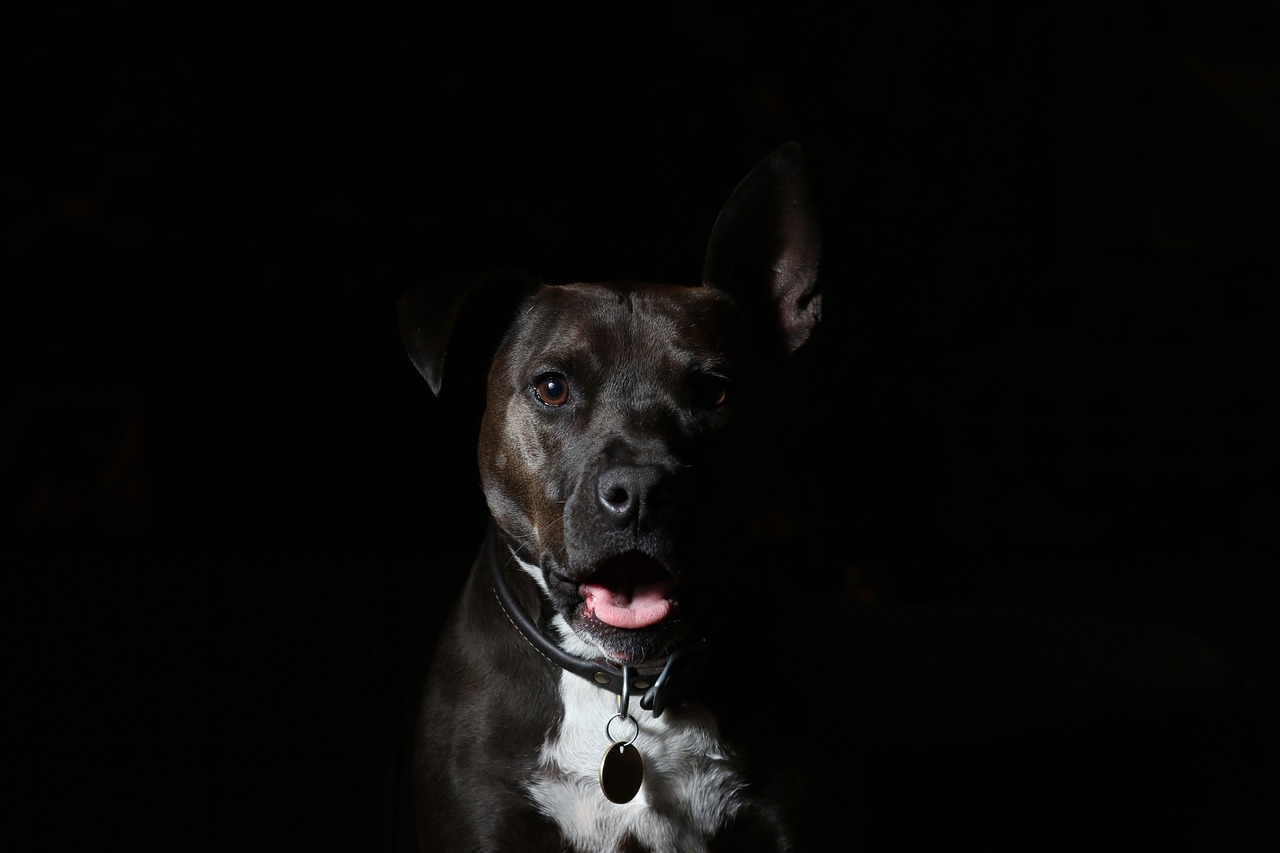
Maintaining Oral Hygiene
When it comes to our beloved flat-faced breeds, maintaining oral hygiene is not just about keeping their smiles bright; it's a crucial aspect of their overall health. Breeds like Bulldogs, Pugs, and Shih Tzus are particularly prone to dental issues due to their unique facial structure and compact jaws. This makes it essential to adopt a proactive approach to their dental care. Did you know that poor oral hygiene can lead to serious health problems, including heart disease? That's right! Just like us, our furry friends need regular dental care to avoid such complications.
So, how can you ensure your flat-faced buddy maintains a healthy mouth? First off, regular brushing is key. Aim to brush your dog's teeth at least two to three times a week. Use a toothbrush designed for dogs, which typically has softer bristles and is angled for easier access to those hard-to-reach places. Additionally, opt for toothpaste specifically formulated for pets, as human toothpaste can be harmful to them. If your dog is not accustomed to having their teeth brushed, start slowly. Let them lick the toothpaste off the brush, and gradually introduce the brushing action.
In addition to brushing, consider incorporating dental chews and toys into your dog's routine. These can help reduce plaque and tartar buildup while providing a fun and engaging activity for your pet. Look for products that have the Veterinary Oral Health Council (VOHC) seal of approval, as these have been tested for effectiveness in promoting oral health. Remember, though, that these should complement, not replace, regular brushing.
Another crucial aspect of maintaining oral hygiene is to schedule regular veterinary check-ups. During these visits, your vet can perform professional cleanings and check for any signs of dental disease. It's a good idea to ask your vet about the best dental care products for your specific breed, as some may have unique needs based on their dental structure.
To sum it up, here are some essential tips for maintaining your flat-faced breed's oral hygiene:
- Brush their teeth regularly with dog-specific toothpaste.
- Introduce dental chews and toys to their routine.
- Schedule regular veterinary check-ups for professional cleaning.
- Stay alert for signs of dental issues, such as bad breath or difficulty eating.
By taking these steps, you can help ensure that your furry friend's mouth stays healthy and their smile remains bright. Remember, a happy dog is a dog with a healthy mouth!
Q: How often should I brush my dog's teeth?
A: Ideally, you should brush your dog's teeth at least two to three times a week, but daily brushing is even better for optimal dental health.
Q: Can I use human toothpaste for my dog?
A: No, human toothpaste contains ingredients that can be harmful to dogs. Always use toothpaste specifically formulated for pets.
Q: What are some signs of dental problems in dogs?
A: Common signs include bad breath, difficulty eating, swollen gums, and excessive drooling. If you notice any of these symptoms, consult your veterinarian.
Q: Are dental chews effective?
A: Yes, dental chews can help reduce plaque and tartar buildup. Look for products with the VOHC seal for proven effectiveness.
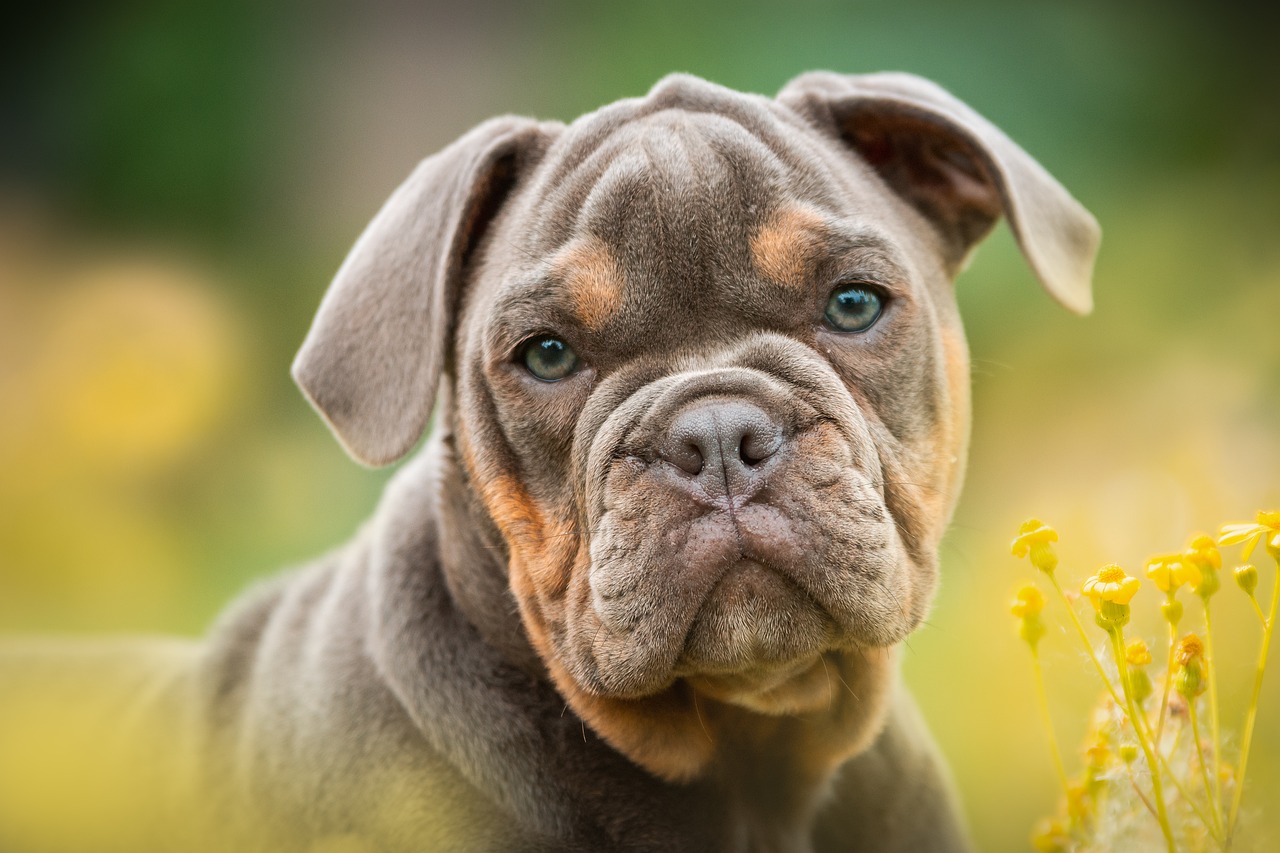
Seasonal Grooming Adjustments
When it comes to grooming your flat-faced furry friend, it's essential to recognize that their needs can change with the seasons. Just like we adjust our clothing and habits as the weather shifts, our pets require a bit of extra attention to stay comfortable and healthy throughout the year. For instance, during the hot summer months, your flat-faced breed may struggle with overheating, which makes regular grooming essential for keeping their coat manageable and their skin breathable. On the flip side, winter can bring its own set of challenges, such as dry skin and the accumulation of dirt and debris in their fur.
In the summer, consider using a lightweight grooming tool that helps remove loose fur and dirt without irritating their sensitive skin. A slicker brush or a rubber grooming mitt can work wonders. Additionally, bathing your dog more frequently during this time can help wash away sweat and allergens that might accumulate, especially in those adorable facial folds. However, be cautious not to over-bathe, as this can strip their skin of natural oils. Aim for a balance, perhaps every two to four weeks, depending on their activity level and the environment they are in.
As the days get shorter and temperatures drop, your grooming routine should pivot to accommodate the colder weather. Flat-faced breeds often have sensitive skin, which can become dry and flaky in winter. To combat this, consider incorporating moisturizing shampoos or conditioners into your bathing routine. These products can help keep their skin hydrated and reduce irritation. Furthermore, pay close attention to their paws; ice, salt, and snow can wreak havoc on their delicate pads. Regularly check and clean their paws after walks, and consider using a paw balm for added protection.
Here’s a quick overview of seasonal grooming adjustments:
| Season | Grooming Tips |
|---|---|
| Spring | Increase brushing frequency to remove shedding fur; check for allergies. |
| Summer | Use lightweight brushes; bathe regularly to keep cool. |
| Fall | Prepare for shedding; consider a de-shedding tool. |
| Winter | Use moisturizing products; protect paws from ice and salt. |
Ultimately, the key to effective seasonal grooming lies in observing your pet's behavior and physical condition. Are they scratching more than usual? Do they seem uncomfortable in certain weather conditions? By staying attuned to their needs and adjusting your grooming routine accordingly, you can ensure that your flat-faced breed remains happy and healthy all year round.
Q: How often should I groom my flat-faced dog?
A: The frequency of grooming can depend on the season and your dog's activity level. Generally, aim for at least once a week, but during shedding seasons or warmer months, you may need to groom more frequently.
Q: Can I use human shampoo on my dog?
A: It's best to use shampoos specifically formulated for dogs, as human products can be too harsh and may irritate their skin.
Q: What should I do if my dog has dry skin in winter?
A: Consider using moisturizing shampoos and conditioners, and ensure your dog is hydrated. Regularly check their skin and consult your vet if the issue persists.
Q: How can I tell if my dog's nails need trimming?
A: If you can hear their nails clicking on the floor or if they seem to be walking awkwardly, it’s time for a trim. Regular checks can help prevent overgrowth.
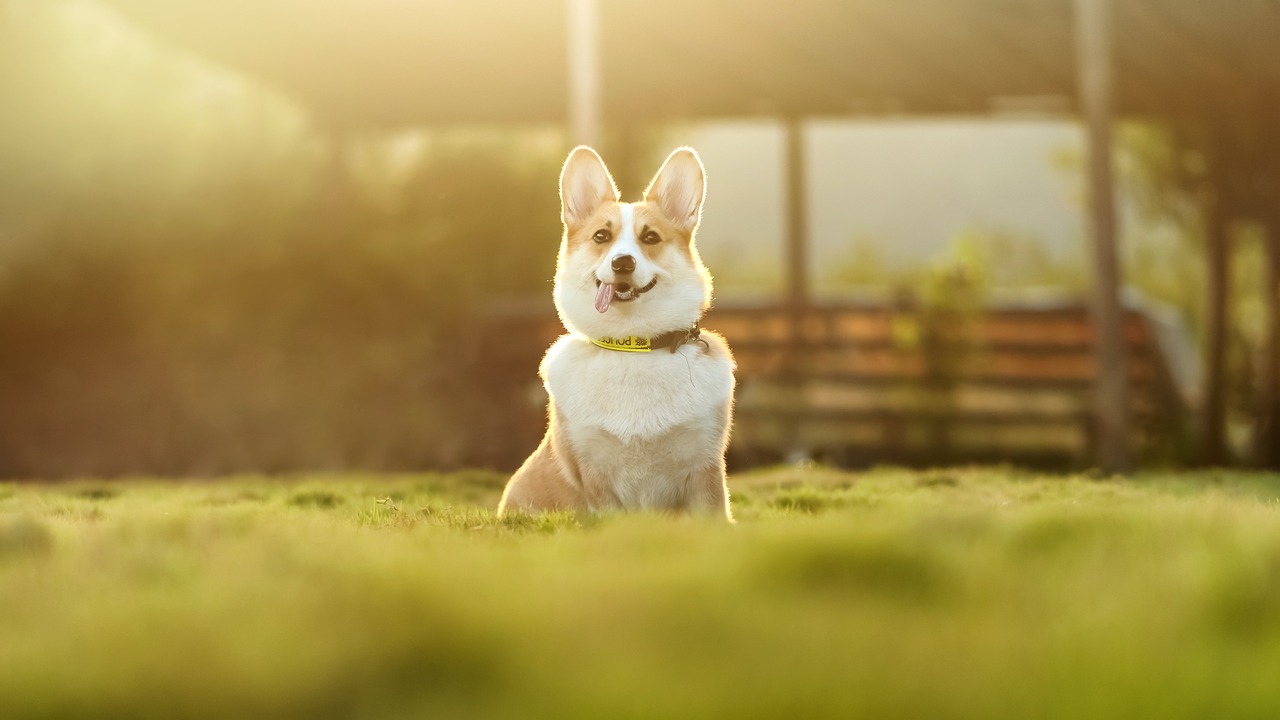
Signs of Grooming-Related Issues
As a devoted pet parent, you want nothing but the best for your flat-faced furry friend. However, it's crucial to stay vigilant about potential grooming-related issues that can arise due to their unique anatomy. Flat-faced breeds, such as Bulldogs and Pugs, are particularly susceptible to various health concerns, and recognizing the signs early can make a significant difference in their quality of life. So, what should you be on the lookout for? Let's dive into some common indicators that your beloved pet might be experiencing grooming-related problems.
One of the first signs to watch for is excessive scratching or rubbing of the face. If you notice your dog frequently pawing at their eyes or face, it could indicate irritation, allergies, or even an infection. Additionally, keep an eye out for any unusual odors emanating from their skin folds or ears, as this can be a sign of bacterial or yeast infections. Flat-faced breeds often have skin folds that can trap moisture and debris, making them prime candidates for these issues.
Another critical area to monitor is your dog's eyes. Flat-faced breeds can develop conditions like cherry eye or corneal ulcers, which may manifest as redness, excessive tearing, or discharge. If you see your dog squinting or rubbing their eyes, it's time to consult your veterinarian. Remember, their adorable squished faces may be charming, but they come with specific health risks that require your attention.
Furthermore, pay attention to your dog's breathing. If you notice any signs of labored breathing, such as snorting, wheezing, or excessive panting, it could be a sign of brachycephalic obstructive airway syndrome (BOAS), a common condition in flat-faced breeds. Grooming practices that promote better airflow, such as keeping their facial hair trimmed and ensuring their nasal passages are clear, can help alleviate some of these issues.
Lastly, be aware of changes in your dog's behavior. If your normally playful pup suddenly becomes lethargic or seems to be in pain, it could indicate discomfort stemming from grooming-related issues. Regularly checking their paws for signs of overgrown nails or cracked pads is essential, as these can lead to mobility problems. If you notice any of these signs, don’t hesitate to reach out to your veterinarian for a thorough examination.
In summary, being proactive about your flat-faced breed's grooming needs can prevent a host of health issues. By staying alert to the signs of grooming-related problems, you can ensure that your furry companion stays happy, healthy, and comfortable. Remember, your pet relies on you to keep them looking and feeling their best!
- What are the most common grooming-related issues for flat-faced breeds?
Common issues include skin infections due to moisture trapped in skin folds, eye problems like cherry eye, and breathing difficulties due to their unique anatomy. - How often should I groom my flat-faced dog?
Regular grooming is essential, ideally once a week for brushing, with baths as needed. However, pay special attention to their skin folds and facial areas during grooming. - When should I see a vet for grooming-related issues?
If you notice excessive scratching, unusual odors, changes in breathing, or any signs of discomfort, it's best to consult your veterinarian promptly. - Can grooming help with my dog's breathing issues?
Yes, proper grooming techniques, such as keeping facial hair trimmed and ensuring their nasal passages are clear, can help improve airflow and reduce breathing difficulties.
Frequently Asked Questions
- What are the best grooming techniques for flat-faced breeds?
Grooming flat-faced breeds involves several techniques tailored to their unique features. Regular bathing, brushing, and cleaning of their facial folds are essential. It's also crucial to check their ears and eyes for any signs of irritation or infection, as these breeds can be prone to such issues.
- How often should I bathe my flat-faced dog?
Generally, you should bathe your flat-faced dog every 4 to 6 weeks, depending on their activity level and coat type. However, always keep an eye on their skin folds and clean them as needed to prevent irritation and infections.
- What tools are best for brushing my flat-faced breed?
Using a slicker brush or a bristle brush works wonders for flat-faced breeds. These tools help to remove loose hair and prevent matting, keeping their coat healthy and shiny. Just be gentle around their sensitive areas!
- How can I prevent ear infections in my flat-faced dog?
To prevent ear infections, regularly check and clean your dog’s ears with a vet-recommended ear cleaner. Ensure that the ears are dry after baths or swimming, as moisture can lead to infections.
- What are some signs of breathing issues in flat-faced breeds?
Watch for signs like excessive panting, snoring, or difficulty breathing during exercise. If you notice your dog struggling to breathe or showing signs of distress, consult your veterinarian immediately.
- How often should I trim my flat-faced dog's nails?
Nail trimming should be done every 4 to 6 weeks, or whenever you hear their nails clicking on the floor. Keeping their nails short is crucial for their comfort and mobility.
- What can I do to maintain my flat-faced dog's oral hygiene?
Regular brushing is key! Aim to brush their teeth at least 2-3 times a week using dog-specific toothpaste. Dental chews and toys can also help keep their teeth clean and healthy.
- How do seasonal changes affect grooming needs?
Seasonal changes can impact your flat-faced dog's grooming needs. In warmer months, more frequent baths and brushing may be necessary to manage shedding and keep them cool, while in winter, you might need to focus on moisturizing their skin.
- What should I do if I notice grooming-related health issues?
If you notice redness, swelling, or any unusual behavior in your dog, it’s best to consult your veterinarian. Being proactive about their health can prevent more serious issues down the line.


